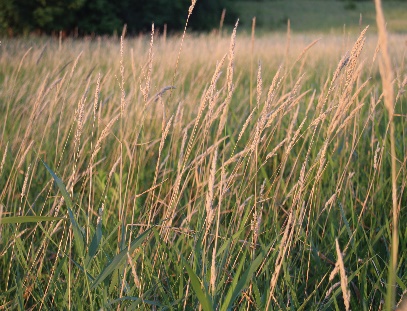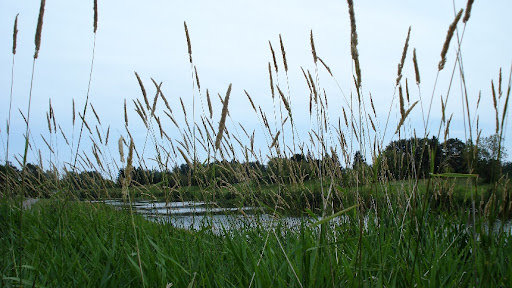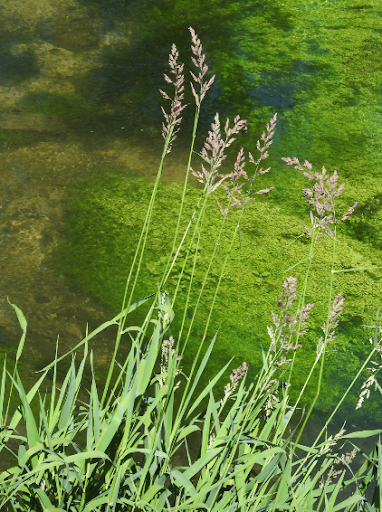Reed Canary Grass is a cool season, perennial grass that grows up to 1.7 m tall. Its leaf blades are flat, 30–120 cm long, 1.9 cm wide, smooth, and taper gradually. Leaf stems are rounded, and greyish to bluish-green. Flowers/seed heads are green, purple, or brown in colour and 7.5–15.5 cm long. Flowering occurs from May to July. As the seeds mature, they turn from green, to purplish, to tan. Reed Canary Grass forms dense clumps, or mat-like colonies.
Prefers to live in seasonally wet, or continually moist areas (i.e. wetlands, ditches). Reed Canary Grass quickly dominates these sites, spreading along ditch systems and other land that is adjacent to watercourses. It can eradicate native vegetation, and is extremely hard to remove once it is established. This is due to the large soil seedbank and permanent rhizome bed that it builds up in the first year of life.
Reed Canary Grass was introduced in the 1800s as a cultivar plant, mainly used to feed livestock. Since then it has escaped, and its many subspecies have hybridized to become the invasive plant we see today in North America.

Reed Canary Grass grows in masses rather than individually, up to 1.7 meters tall. Usually, the first species to emerge in the spring and may be easiest to find then.



The name Phalaris is Greek for “shining,” and refers to the shiny seeds; arundinacea means “reed-like.”
Choose to plant and maintain native plant species, taking care not to disperse Reed Canary Grass seeds. This species must be dug up when found, as mowing will not be sufficient to kill it. When digging it out, be sure to remove the entire root mass and rhizomes, as a plant can sprout from a single rhizome. Dispose of the plant material properly, and be sure to check back for sprouting rhizomes. If you spot these invasive species, report the location to iNaturalist or directly to the NSISC.
Join our mailing list.